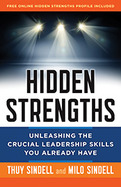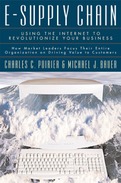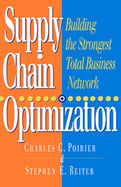2015
In today's turbulent world you need to continually develop new skills to remain agile and adaptive—otherwise, your strengths will become crutches. But contrary to what many people believe, the best way to develop new skills isn't working on your weaknesses—it's identifying and elevating the underdeveloped abilities that lie between your weaknesses and your strengths.
Books like StrengthsFinder 2.0 have helped leaders build on what they're best at—but they stop there. If you only go that far you're missing a huge opportunity for professional growth. Leading Silicon Valley consultants Thuy and Milo Sindell argue that relying exclusively on your top abilities can actually hold you back—it's critical that you expand your repertoire of skills. The most effective way to do that is find your hidden strengths—midlevel skills that can quickly be elevated into learned strengths with attention and focus. This book shows you how.
Too many people waste their time working on their weaknesses, say the Sindells. Although focusing on shoring up weaknesses on the surface makes sense, they've found that it takes too much time and effort—the ROI just isn't there. The neglected skills in the middle, neither strengths nor weaknesses, are where the most potent development opportunities lie. They're close enough to being strengths that putting your energy there can offer a fast and powerful payoff. Us the Sindells' free online Hidden Strengths Assessment, along with the exercises and case studies in the book, you'll be able to identify your most promising hidden strengths and create a plan to turn them into major assets.
In today's work environment, not growing and stretching yourself translates into lack of innovation, stagnation, and obsolescence. You can't keep leaning on the things you're naturally good at or your strengths will become training wheels. But with the Sindells' help, you'll continually develop new skills that will keep you riding at the front of the pack.
1995
"Economic insanity" describes what is happening in America and the wider world beyond its borders. The economy is out of control-out of our control-to the point that it is in control. The economy has divorced itself from the political and social ideals that define the American Dream, which has been transformed from an all-inclusive social ideal to an economic fantasy.
In Economic Insanity, Roger Terry explains how and why economics has come to dominate all aspects of our lives. Basic political, social, and moral values used to hold us together as a nation. Today, it seems, the economy is all that holds us together. The most drastic effects of the rise of Economic America are the impoverishing of democracy, the loss of liberty, and the abandonment of equality. Terry shows how our present system is failing at its most fundamental task-to provide for the physical needs and wants of human beings-and concludes that the system does not need fixing, it needs to be replaced.
This provocative proposal exposes the misconceptions that drive our economic system and offers systemic and revolutionary solutions. With passion and persuasiveness, Terry asserts that in order to recapture the American Dream, we must begin to subject the economy to the ideals of democracy, liberty, equality, and unity.
Terry questions, and suggests we abandon, four fundamental pillars of capitalism: endless economic growth, ever-increasing productivity, accelerating technological advances, and self-interest. He shows how these basic assumptions that drive our version of the free-market system are causing a host of interrelated and deeply entrenched problems. He explores critical social dilemmas that result from our current economic assumptions, including the loss of personal freedom and democracy, the perpetual and unavoidable increase in inequality, and the disuniting of America. If we are to turn our nation from this path of folly, Terry argues, we must first abandon the faulty assumptions that drive our thinking.
Terry proposes a solution that redefines the notion of capital ownership, creating a system of limited, widespread ownership in which individuals own only as much capital as they can make personal productive use of. Under this system, employees become owner/partners, power is returned to people, self-interest is defused, technology is harnessed, and meaningful equality is encouraged.
Incorporating ideas from Adam Smith and Thomas Paine to Paul Johnson and Herman Daly, Economic Insanity challenges readers to stop looking for answers within the system and look instead to changing the system.
- Shows America's economic system to be at odds with its social and political goals and proposes a system designed to increase personal freedom
- Questions the most basic assumptions that drive our economic system, and argues that its entire structure must be challenged
2002
E-SUPPLY CHAIN, the most advanced and up-to-date publication of its kind, reveals how companies can form the necessary business alliances to combine the power of supply chain and the Internet-two of most versatile and effective business tools of the new century.
E-Supply Chain shows how leading companies have forged a one- to two-year lead over competing supply chain networks using the marriage of supply chain and e-commerce to achieve market dominance. The authors present a step-by-step process for establishing joint efforts and combining best practices to create an unbeatable network of seamless response to specific business customers or consumer groups.
Rich in details and action studies, E-Supply Chain is a hands-on guide to implementing the changes necessary in each of the major functions of a typical firm-purchasing, marketing, sales, customer service, engineering, planning, manufacturing, logistics, and more. The authors detail how the e-supply chain network evolves to become a global "value chain constellation," destined to dominate specific markets and industries while always keeping the satisfaction of the customer or consumer as the ultimate goal.
Combined with Poirier's two earlier books, Supply Chain Optimization and Advanced Supply Chain Management, E-Supply Chain completes the trilogy that can take any organization from its beginning stages to full application of advanced supply chain and e-commerce techniques.
- From the foremost expert on supply chain management
- Shows how market leaders are focusing their entire organization on driving value to customers
- A practical guide for developing effective supply chain plans and e-business models
- Reveals how leading firms have forged up to a two-year lead over competing supply chain networks
- Rich in details and action studies of what works and what doesn't
2009
Supply Chain Optimization illustrates how companies that create, distribute, and sell products or services can join forces to establish a supply network with an unbeatable competitive advantage. Poirier and Reiter explain how companies can successfully employ partnering, rather than working on improvements in isolation, to identify high opportunity initiatives across a total supply network. By applying key resources on focused opportunities and sharing the resulting savings, members of the network get larger results, faster, as well as funding for future efforts.
At the heart of Poirier's and Reiter's plan is a four-step model to mobilize joint effort and focus resources from suppliers, manufacturers, distributors, and retailers on initiatives that have a high pay-back potential. The authors have studied the successes of such influential retailers as Wal-Mart, K-Mart, Target, and Sears, all of which are laying the groundwork for how to use point-of-sale data to create quick-response alliances with selected suppliers who will take responsibility for replenishing stock to predetermined levels. Supply Chain Optimization explains how to develop such effective partnering techniques and demystifies the electronic data linkages that are necessary to make them work.
Supply Chain Optimization offers survival tools for companies of all sizes. The authors describe consortiums, or "share groups," of smaller companies that can compete with the volume leverage of large corporations, superstores, and warehouse stores. By analyzing their shared supply chain and pooling their available resources, these consortiums can find hidden savings to protect their profit margins and remain competitive in today's marketplace.
The book includes case studies that show what a wide range of companies are actually doing to achieve supply chain optimization. Companies profiled include: Financing Division of General Electric, Dial Corporation, Proctor & Gamble, Baxter Healthcare Corporation, Navistar/Goodyear, Packaging Corporation of America, Dominick's, Hart Mountain Corporation, and General Motors--Saturn.
Partnering requires more than technological expertise. Successful partnerships display high levels of cooperation expressed by the sharing of resources, time, energy, and the benefits achieved. Poirier and Reiter describe the many pitfalls that must be avoided, and create a vision of how firms can build on their existing supply initiatives to gain a greater competitive advantage in today's business world.
- Helps manufacturers, service companies, suppliers, distributors, and retailers find the hidden partnership opportunities in the business relationships they already have
- Explains how true partnering techniques can generate enhancements across a total supply network resulting in savings for all members of the network, as well as funding for future improvements
- Includes action studies to show how the concepts have been implemented
2018
In this updated edition of Dare to Serve, former Popeyes CEO Cheryl Bachelder shows that leading by serving is a rigorous and tough-minded approach that yields the best results.
When she was named CEO of Popeyes in 2007, the stock price had slipped from $34 in 2002 to $13. The brand was stagnant, the team was discouraged, and the franchisees were just plain angry. Nine years later, restaurant sales were up 45 percent, restaurant profits had doubled, and the stock price was over $61. Servant leadership is sometimes derided as soft or ineffective, but this book confirms that challenging people to reach a daring destination, while treating them with dignity, creates the conditions for superior performance.
The second edition of this bestselling book includes Bachelder's post-Popeyes observations and new examples of how you can switch your leadership from self to serve. Ever engaging and inspirational, Bachelder takes you firsthand through the transformation of Popeyes and shows how anyone, at any level can become a Dare-to-Serve leader.
























